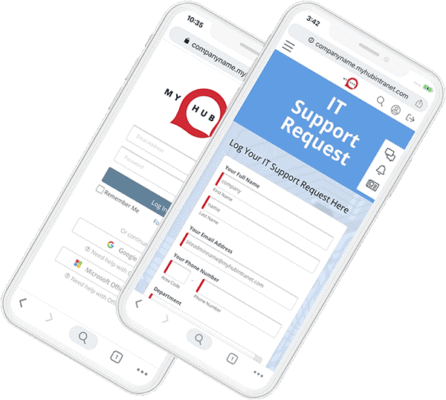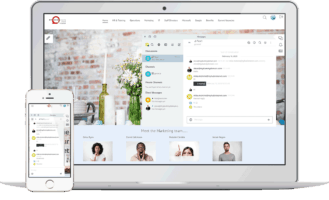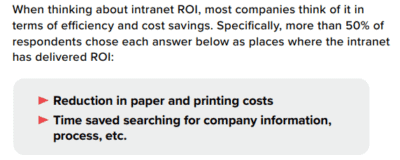Every business is looking to cut costs right now.
That’s why it’s an ideal time to think how many unnecessary copies of documents, customer orders, approval forms, and emails are printed each day. Now consider how much your organization is spending on the associated photocopier ink, toner and ongoing maintenance.
The total amount is probably much higher than you anticipated.
And this excess is made worse when 45 percent of office printouts end up in the trash every day! This is a staggering waste of trees and a huge environmental cost. Let alone a futile expense for businesses looking to reduce costs.
Ironically, paper use has increased since the advent of the digital workplace. Despite advances in electronic communication, our love affair with paper has continued. The Environmental Paper Network reports that over the past 50 years, there’s been a four-fold increase in global consumption of paper.
Reducing paper consumption isn’t just about saving money. It’s also about enhancing your brand reputation in a more environmentally aware and greener marketplace. In one survey, 89 percent of Gen Zers said they are concerned about the planet’s health, and of this, 94 percent were of the view that businesses should help address urgent issues.
Recycling and cutting down on paper are some of the easiest and most cost-effective ways you can contribute to the environment. And at the same time, you will be saving money and increasing productivity.
So, how can your business cut down on wasteful paper use and contribute to the environment? Here are 12 paper-saving tips to get you started.
1.Switch From Paper To Online Approval Forms

Online approval forms are more accurate. And they are also faster and more efficient.
Use the intranet’s integrated forms builder to set up online approval forms in your business. Alongside cutting down on paper, you will also be saving staff time and effort. The intranet automatically routes the approval form to the correct manager for action. And anytime, anywhere, anyplace access makes for a more effective, streamlined process for staff and managers.
Automating business processes also means that you are minimizing the possibility of things going wrong. This includes the potential for internal fraud or corruption.
2. Use Electronic Document Storage
Do you have still have dusty filing cabinets packed full of paper files and documents? Finding the information that you need is a nightmare, right? It’s definitely time to move to electronic document storage.
More eco-friendly, digital storage will also cut down on paper costs and the time employees spend on sourcing information. Furthermore, digital storage systems don’t take up valuable physical space in the office. And they improve efficiency as employees can source data directly for themselves.
Do away with those old filing cabinets for good! Instead, a digital system will tick all the boxes as well as improving your green credentials.
3. Introduce A Paperless Office
The idea of a paperless office has been around for a while now. However, companies often approach it half-heartedly. A paperless office isn’t just about increasing your use of email. It requires a fundamental rethink of how you deal with paper; how projects are managed; how work approvals are processed; and much more.
Online collaboration tools can expedite almost every internal task. If, say, a new marketing policy is being developed, encourage team members to make their edits to a Google document electronically. Not only is it easier to keep track, but it also means you are not unnecessarily printing and circulating paper copies, which can lead to confusion, version control errors and mistakes.
4.Think Before You Print

If it is necessary to print, then make sure the default setting on all computers is double-sided printing. Even better, encourage employees to print two pages on a single side. Double-sided and two-page options would see you printing four pages on only one piece of paper. And that’s a significant saving.
For many businesses, the need to demonstrate regulatory compliance is the driver behind the decision to print. Having a physical record to show to an inspector is a factor for some. Scanning apps are one way to satisfy this requirement without having to print a hard copy. These are particularly useful where there’s a need for a signature to sign-off. An electronic version means they are readily accessible even for staff working outside the office.
5. Limit Print Runs
For flagship documents such as the annual report, you may want to have printed copies available for clients or suppliers. All too often, though, businesses overestimate their needs. Dozens of hard copies end up in the storage cupboard or recycling bin.
Rather than assuming everyone wants a hard copy, why not make it available on request instead. Furthermore, nowadays, it’s acceptable to send a website link or PDF version to your valued clients.
And if you want to have in-house copies available for employees, carefully consider whether a paper version is necessary. You can always keep a hard copy in communal areas such as the shared kitchen for staff to consult.
6. Switch To Paperless Billing
Paperless billing is increasingly becoming the norm. Indeed, most accountancy software includes electronic capabilities, so be familiar with all the possibilities.
Furthermore, insist on paperless statements from your bank. Speak to your vendors and suppliers about digital invoicing. And let customers know about electronic purchasing options.
7. Communicate Electronically
Need to update staff on some important company news? Or perhaps a monthly employee newsletter is an essential communication tool? Consider switching to electronic platforms to get your vital messages out to all staff. As more employees work from home or in non-desk roles, digital communication is more critical than ever.

Furthermore, the intranet also allows you to take your communications to another level. Open up two-way conversations with workers through social intranet features, including blogs, activity walls, and forums. The corresponding increase in your rates of employee engagement will be a most welcome additional benefit.
8. Use An Electronic Staff Directory
How often have you spent time and money printing a staff directory only for it to be immediately out of date? Staff members come and go all the time, making paper staff directories a waste of time and resources.
It’s a different story with online directories. Easier to keep updated, digital versions allow you to include more information than a name and phone number. Lots of businesses are using employee directory software to showcase internal knowledge and expertise. This makes the process of corporate knowledge sharing and management much more straightforward. And it encourages a culture of collaboration and joint working throughout the business.
9. Repurpose Unwanted Printed Paper
Finished with that agenda from yesterday’s meeting? Rather than putting it in the trash, why not use it for notetaking? And instead of leaving a sticky-note for a colleague away from their desk, use a scrap piece of paper. Even with careful, double-sided printing, there will be plenty of scrap paper available. So, make sure you exhaust all potential uses before throwing it in the recycling bin. Even better, send a quick IM instead, with the details – which can easily be retrieved later on, if needed.
10. Send E-Cards
Sending Christmas cards and holiday greetings is still an important office tradition. After all, it’s a great way to keep in touch with valued clients and customers. This year though, send out e-cards rather printed ones. There are significant savings to be had on mail costs as well as cards and envelopes. Plus you will have a positive impact on the environment as well.
11. Recycle, Recycle, Recycle

Furthermore, be sure to only buy recycled copy paper. Using recycled paper means that fewer trees need to be cut down. And with paper production linked to the destruction of forests, climate change, and pollution, you will be making a critical environmental contribution.
12. Invest In An Intranet
As we have seen, an intranet can help you achieve every one of these steps. Often an intranet has a direct contribution to make such as automated workflows, paperless office, and online employee directories. Or sometimes it’s a supporting role in educating and informing staff.
The bottom line is that an intranet will help you save paper and reduce waste in the workplace.
The CMSWire Ragan Communications’ 2020 Evolution of the Intranet Survey confirms this. The research examines the return on investment (ROI) of the company intranet:

Evolution Of The Intranet Survey (Ragan)
And in the context of paper-saving tips, the results are enlightening. For survey respondents, the intranet’s ROI is all about improved efficiency and cost savings. The top five ways in which the intranet has shown an ROI for the organization are as follows:
- 8 percent of respondents mentioned the reduction in paper and printing costs
- 50 percent talked about the time saved searching for company information and processes
- 7 percent cited streamlined workflows and business processes
- 32 percent highlighted fewer all-company emails
- 3 percent stated that the intranet replaced paper employee directories.
Intranet Delivers Improved Business Processes Across The Board
And the good news is that the company intranet can deliver a whole host of other business benefits. From improved communication, increased collaboration, and enhanced employee engagement, the intranet supports operations across the board.
Are you interested in finding out more about how an intranet can support your paper-saving objectives, while providing much broader business benefits? Get in touch with the friendly team at MyHub. Our cost-effective, all-in-one intranet software is easy to set up and fun to use. You won’t need a college degree in computing to get started!
Explore the possibilities today with a free demo, or sign up for a no-obligation 14-day trial. When it comes to ROI, you will soon discover that the intranet’s paper-saving capabilities are just the start!







